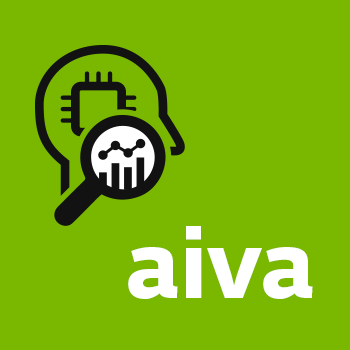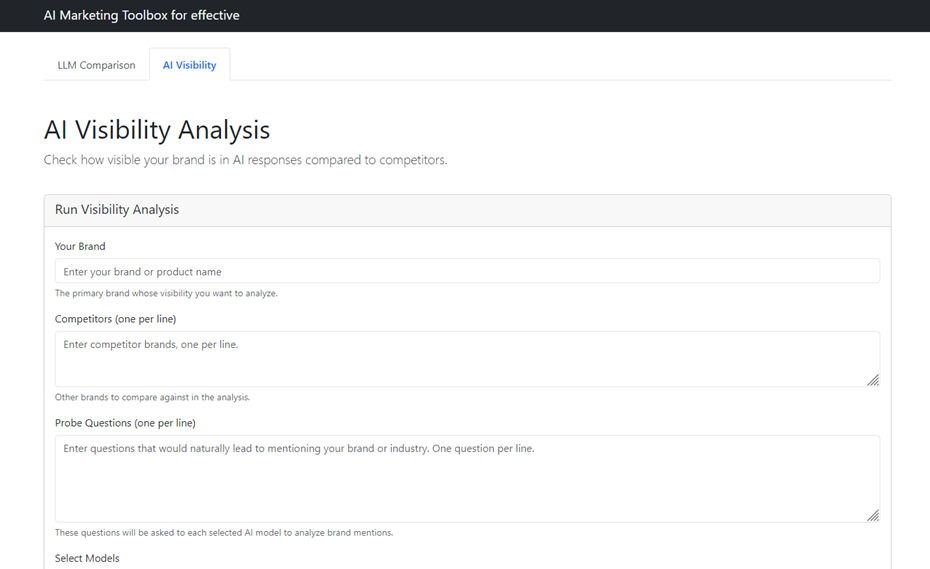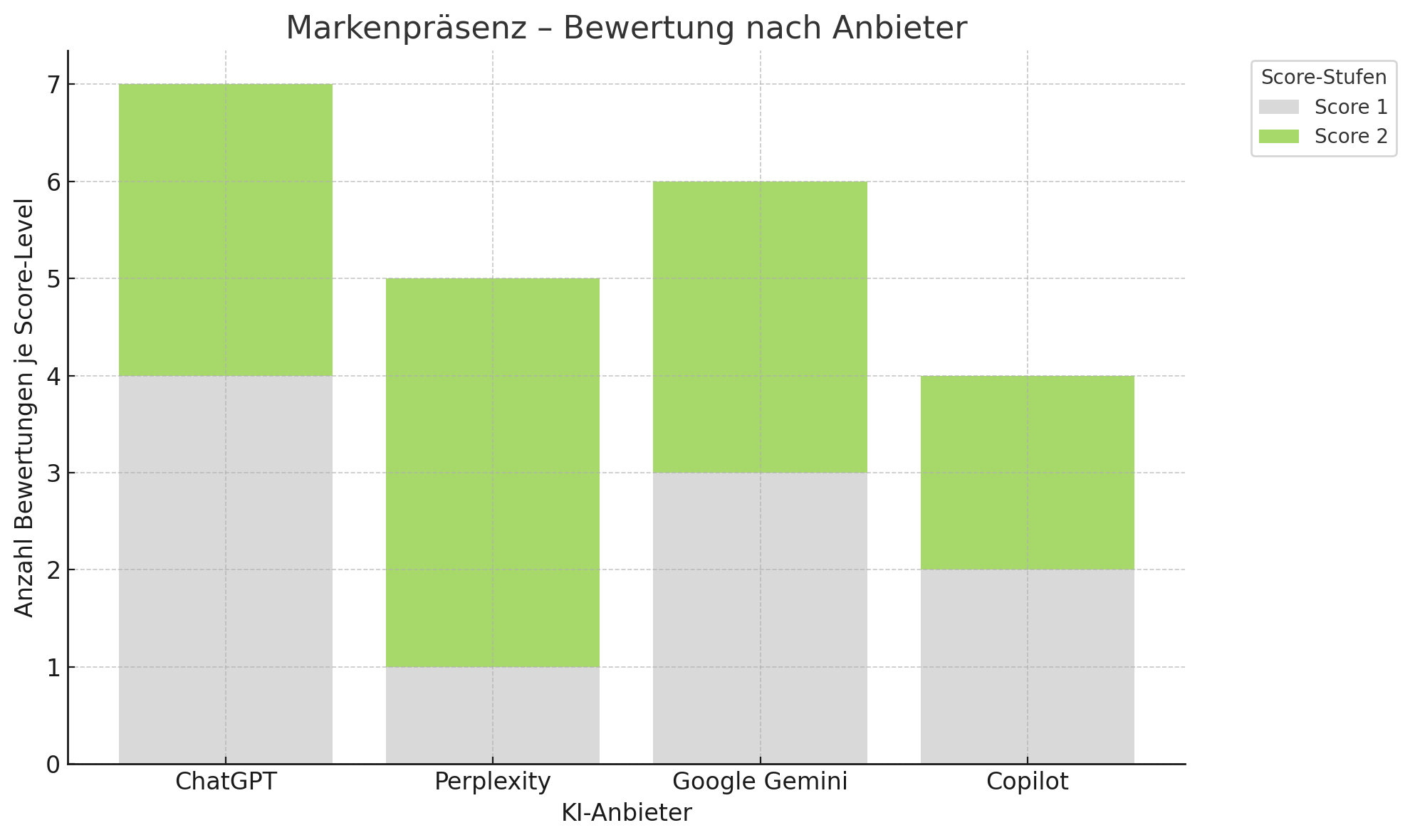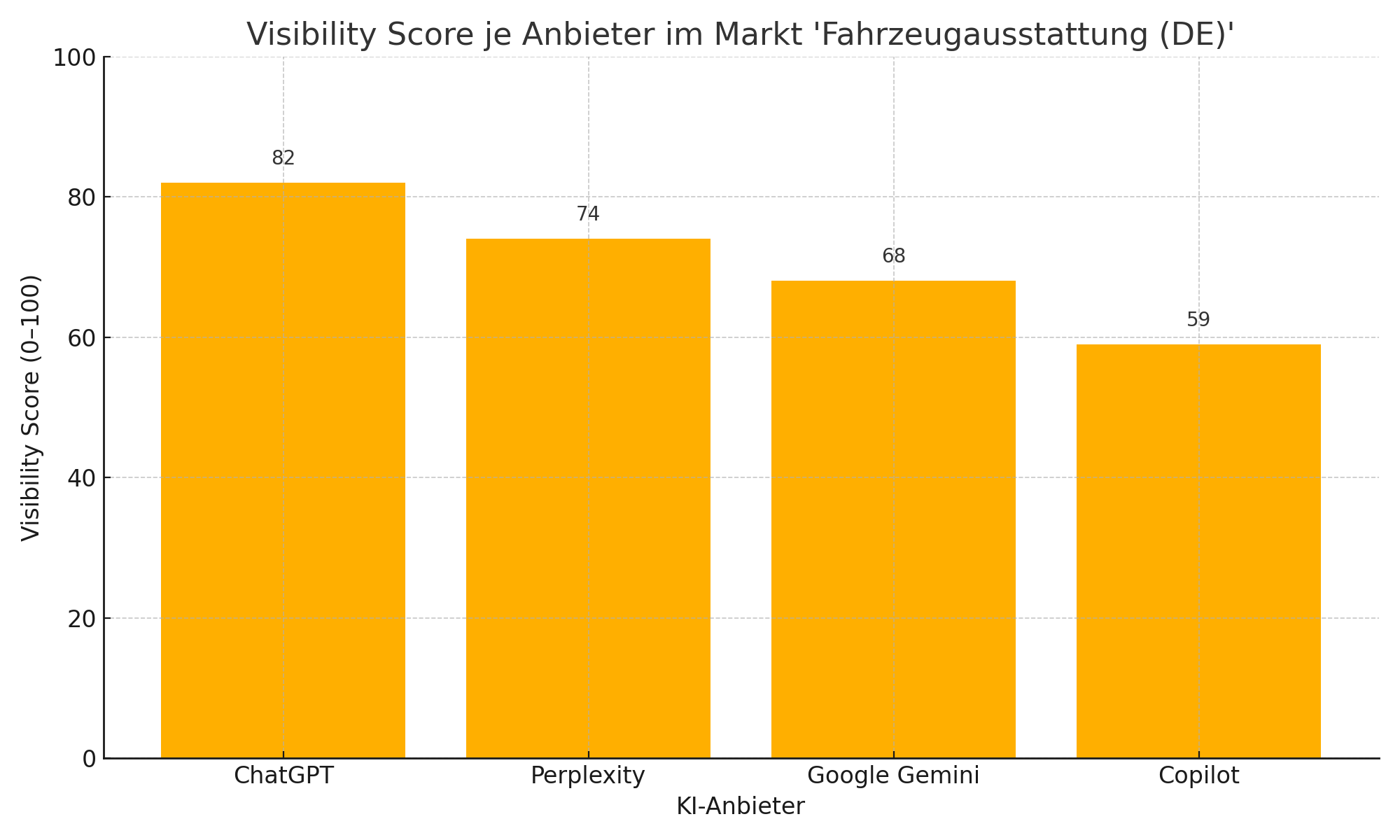AI Visibility Audit – Rethinking Digital Presence
Structure of the Analysis Model
The AI Visibility Toolbox follows a clear, three-stage model focused on relevance, visibility, and market potential:
The process starts with developing test questions tailored to specific markets, business units, and languages.
Around 50 questions per language are created, focusing on products, services, and market contexts.
The evaluation examines whether the brand is explicitly mentioned in AI-generated answers.
If not, it checks whether competitors are named or whether potentially relevant third-party platforms (e.g. industry portals or trade media) appear – which could be leveraged as new marketing channels.
A visibility score is calculated to quantify the brand's presence across different AI providers (e.g. ChatGPT, Perplexity, Gemini).
This score is aggregated by market and language, enabling a comparable and scalable assessment of brand positioning within AI-driven search environments.
Key Differentiators of Our Approach
The effective AI Visibility Analysis stands out clearly from standard solutions on the market:
- Market-Specific Competitor Definition: No generic global list – competitors are defined by region and industry for greater relevance.
- Targeted Question Sets: Designed similarly to long-tail keyword strategies from traditional SEO – tailored to real use cases and search behavior.
- Scoring Model: Visibility is measured using an objective, transparent scoring framework – enabling cross-platform comparisons.
- Marketing Value: The analysis identifies industry portals or niche platforms (e.g. directindustry, schuettgutportal) as potential new touchpoints – creating strategic opportunities beyond traditional SEO channels.
Scoring Model
If a brand appears in AI-generated answers, its prominence is assessed using a structured scoring model:
Scale 1–10:
- 1 = No mention
- 5 = Mentioned equally alongside competitors
- 10 = Central, positive mention with recommendation
Evaluation Criteria:
- Position within the answer
- Tonality of the mention
- Visibility in comparison to competitors
- Degree of endorsement
Strategic Implications for Companies
The new AI-driven search landscape requires a strategic shift:
- Channel diversification: Visibility must be monitored across multiple AI platforms – not just Google.
- Platform- and market-specific analysis:
- Where is my brand visible?
- Where are competitors more prominent?
- Which third-party platforms (e.g., industry portals) offer untapped potential?
- Identifying visibility gaps: Proactively address weaknesses in core markets or product segments.
The AI Visibility Analysis is more than just an analytical tool – it is a strategic control instrument for B2B marketing in the age of AI. Those who understand and actively manage their visibility in AI-driven search secure lasting competitive advantages.
A well-crafted strategic plan forms the foundation for long-term success.
- Communication requires high-quality, audience-specific content – especially relevant for positioning in generative search results (SGE).
- Thought leadership emerges when content deeply engages with core topics and evolves continuously over time.
- Monitoring ensures transparency and continuous learning: Regular visibility audits using consistent question sets – supplemented with new queries based on market developments – reveal both progress and gaps. This enables companies to understand their competitive positioning, identify marketing opportunities, and measure and optimize the effectiveness of their strategies in a targeted way.



